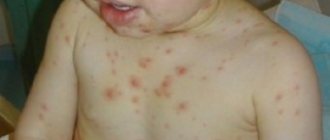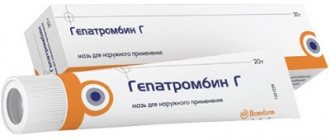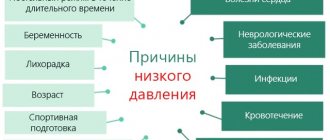For the parents of every child, there is nothing worse when their child is sick. Especially at an early age, when the baby still cannot tell, or even show, what and where he hurts. Even if the child showed or explained where he has unpleasant, painful sensations, you should not self-medicate, but should immediately consult a doctor.
Pediatric cardiology in Saratov sees children at different ages and allows us to identify possible disorders in the early stages, and in addition to cope with the disease in the active phase.
How to understand what exactly hurts in a child’s chest
First of all, this is not just a whim, but crying, screaming and even hysteria. At this time, the child can clench his fists and pull them to the chest, or he can simply hit himself in this area. Additional symptoms include:
- shortness of breath;
- cardiopalmus;
- difficulty breathing or swallowing;
- less often elevated temperature.
Since there is strong pain in this area, the baby rarely turns over on his stomach, but will lie on his back or side, although he previously loved this position.
The key symptom of compressive pain is a sudden change in mood, and in addition, the child shrinks, taking the fetal position, thus helping himself to cope with such severe pain at the level of instincts. Sometimes sharp redness of the whites of the eyes, red spots on the body in the chest area and face are noticeable.
Pressing pain can make itself felt progressively. One moment everything is fine, the next it’s hard to breathe. In order to exclude all possible causes, and in case of diagnosis and treatment, return to its former healthy state, it is necessary to regularly visit a pediatric cardiologist in Saratov. The first dose is appropriate at the age of 1–2 months, and then every six months, if there are no visible pain syndromes.
Features of cough with tracheitis
Cough is a key symptom of tracheitis in a child. It is intrusive, often annoying, painful, with a rough, deep sound tint. A cough with tracheitis in a child may be unproductive (dry) or accompanied by the release of viscous, light sputum. Its color depends on the nature and cause of the inflammatory process. With bacterial tracheitis, the sputum released during coughing is usually greenish, and with viral tracheitis, it is white-gray and scanty. Coughing attacks with tracheitis often appear in the early morning hours and immediately after waking up. This is explained by physiological stagnation of blood in the child and weakening of drainage (release of sputum) of the respiratory tract during prolonged lying down. Swelling and accumulating mucus provoke a coughing attack.
What diseases indicate pain in the heart area?
Pain in the heart area can be caused by the following diseases:
- intercostal neuralgia;
- cardiovascular disorders;
- scoliosis;
- kyphosis.
To accurately determine the diagnosis, it is necessary to undergo a series of examinations, including:
- Ultrasound;
- general analysis of urine and blood;
- ECG.
Concerned parents are concerned about what is the cause of the disease. If disturbances are observed from birth, this may be a consequence of intrauterine defects, or, in addition, disturbances caused by birth trauma.
If pain in the heart area begins to appear over time, it is necessary to track at what exact moments it occurs:
- after physical or emotional stress;
- at rest;
- during sleep.
If the cause of the pain symptom is the heart, then the baby may feel pain:
- in the neck;
- in the shoulder;
- in the left upper part of the sternum;
- less often - in the center of the back.
If the main cause is ischemic lesions of the heart muscle, then the key symptom will be that the pain is short, paroxysmal, and often dull. As a rule, it manifests itself after active sports or an emotional outburst.
Even though the child cannot always clearly explain where exactly and how it hurts, he makes it clear to you that the discomfort is in this area - complaints cannot be ignored and you must urgently make an appointment with a doctor for consultation and answers. to many pressing issues.
Unfortunately, the cause of pain is often associated with rheumatism. If previously many believed that this was a disease of people in old age, now it is becoming more “rejuvenated”. A doctor can make or exclude this diagnosis based on examination, as well as the results of rheumatic tests. Particular attention should be paid to the health of a child aged 5–8 years during the period of active growth, when internal organs do not always keep pace with the active growth of bone and muscle tissue.
The cause of pain may be neurosis or autonomic disorders. If the child is active, moves a lot and does not even consider your request or offer to rest, take a breath and experiences pain after active play or sports, and they quickly pass, this indicates temporary manifestations of cardialgia.
Types of tracheitis
There are several classifications of this disease:
- according to duration, tracheitis is divided into acute and chronic, the latter most often occurs with periods of exacerbation and remission;
- according to its etiology (reason), it can be infectious or non-infectious;
- Based on the nature of changes in the mucous membrane, they distinguish between catarrhal (when the surface layer of the mucous membrane becomes inflamed), hyperplastic (when the mucous membrane becomes inflamed and thickens) and atrophic tracheitis (when the mucous membrane becomes thinner and loses a significant number of cells capable of performing its functions).
The approach to its treatment depends on the type of disease.
Do infections and viruses cause pain symptoms?
Yes, first of all, it is a streptococcal infection, which causes complications in the heart, and in addition can provoke the rapid development of rheumatism.
Viral myocarditis is provoked by pathogenic cells and can manifest itself as a consequence of influenza or ARVI. If 2-3 weeks ago a child suffered from a sore throat or scarlet fever and after that began to complain of chest pain in the front or back, it is urgently necessary to consult a specialist to exclude negative reactions.
If pain symptoms actively manifest themselves while running, this may indicate excessive strain or cardiac dysfunction:
- cannot cope with blood volume;
- does not correspond to size according to age standards.
Having rested after running, did the child stop experiencing pain? – Still, you shouldn’t hesitate, and you need to show him to a cardiologist for consultation. To obtain an accurate diagnosis, blood tests, cardiogram, and ultrasound of the heart are prescribed.
The main causes of pain associated with dysfunction of the heart muscle:
- the vessels do not keep up with the growth of bone and cartilage tissues;
- development of vegetative-vascular dystonia, which is especially important in adolescence;
- dysfunction of the musculoskeletal system.
When a child is too small and something hurts, parents ask to point with their finger exactly where. Sometimes babies can point to the left side of the chest area, but their stomach hurts. “Not real” pain in the heart area is caused by osteochondrosis, gastrointestinal disorders, and scoliosis.
Sometimes a child may feign pain. You can understand this by his behavior, and besides this, if by switching his attention to something else, the pain goes away, we can say that the baby is capricious and simply requires attention.
If pain is observed during coughing or taking a deep breath, and does not go away quickly when changing position or resting, this may indicate pleurisy or tachycardia. During the appointment, the cardiologist will listen to the heart, determine the heart rate and, if necessary, may prescribe other tests in order to obtain the most accurate result and prescribe treatment in a timely manner.
Observe the nature of the pain: pleural - during movement, deep inspiration, coughing. The second type is pressing pain behind the sternum. In any case, it is necessary to show the child to a specialist as quickly as possible.
When the baby is already able to speak and describe the nature of the pain, ask him to describe in detail where exactly he feels discomfort, what type of pain he feels, monitor its intensity and, possibly, determine the associated factors:
- active sports;
- strong emotional reactions;
- reaction to certain foods.
If the baby has undergone open heart surgery, then regular consultations with a pediatric cardiologist, compliance with the course of treatment and recommendations are mandatory.
Attentive parents not only pay attention in a timely manner to what may be bothering their child, but also constantly consult with professional medical staff to prevent the disease from worsening and resolve the problem at an early stage.
The health of your child should be entrusted to professionals. If the first symptoms occur, consult a doctor! At the First Children's Medical Center, experienced doctors will quickly recognize the signs of the disease, conduct a full examination using modern medical equipment and provide qualified medical care. We work seven days a week and are waiting for you at any time from 8.00 to 20.00.
Make an appointment with a cardiologist
Choose a doctor
Causes of reactive pancreatitis in children
Unlike adults, children more often react to infections and inflammations by disrupting the functioning of the pancreas.
The most typical causes of reactive pancreatitis in children are1:
- gross violation of diet;
- regular consumption of fatty and sweet foods, foods high in preservatives and dyes;
- long-term treatment with antibiotics;
- frequent ARVI, flu, colds;
- repeated infection with helminths;
- allergic reaction (to food or medicine);
- congenital pathologies of the gastrointestinal tract, contributing to the development of inflammation of the pancreas;
- stress, emotional overload.
Medical practice shows that the key causes of reactive pancreatitis in children are related to nutrition. Namely, with violation of his regime, introduction of harmful foods into the diet, and passion for fast food.
Products that can provoke reactive pancreatitis in children:
- fried foods (both vegetable and butter);
- fatty foods;
- smoked meats;
- spicy seasonings;
- fast food (burgers, chips, French fries, crackers);
- sweets with dyes and artificial additives;
- carbonated drinks;
- packaged juices.
What does diagnostics consist of?
The complex diagnostic process includes the following basic procedures and manipulations:
- Examination by a specialized doctor . The specialist identifies areas where pain is felt and checks for swelling. Evaluates the depth of breathing, the presence of wheezing, and the participation of both lungs in the respiratory process. After this, additional examinations are prescribed.
- Blood tests . Laboratory tests make it possible to identify anemia, which is observed in 70% of cases of development of this pathology in children, determine the degree of oxygen saturation of the body, detect inflammatory processes, etc.
- Radiography . Images in several projections make it possible to identify excess fluid in the pleural cavity and determine the form of pathology: exudative or fibrinous.
- Ultrasound . Allows you to estimate the thickness of the pleural sheets, as well as determine the amount of fluid between them. Source: Perevoshchikova N.K., Koba V.I., Zabylina E.V., Bolotnikova O.Yu. Ultrasound scanning of pleural cavities for exudative pleurisy in children. Issues of modern pediatrics, 2006, p. 452.
- Pleural puncture . With its help, a sample of pleural fluid is removed, its properties, composition, and features are assessed.
- CT scan . It is carried out to assess the structure of the pleura and lungs. Prescribed if there is a suspicion of the development of a neoplasm Source: Shamsutdinova N.G., Dyakova E.V., Ilyinsky V.I., Mingazova L.I., Spiridonova N.S. Difficulties in differential diagnosis of pleurisy. Clinical example Practical Medicine'4 (89) June 2015, volume 2, pp. 171-173.









